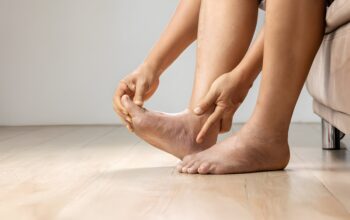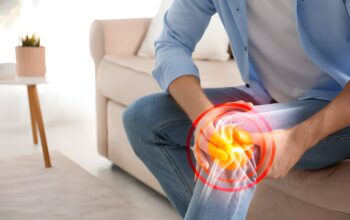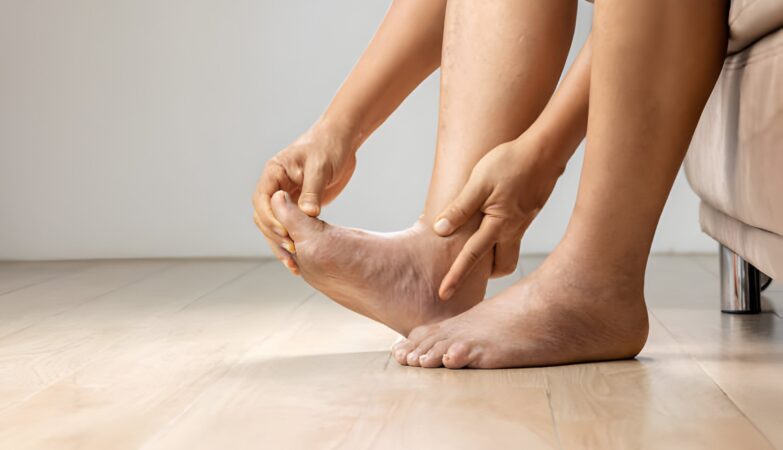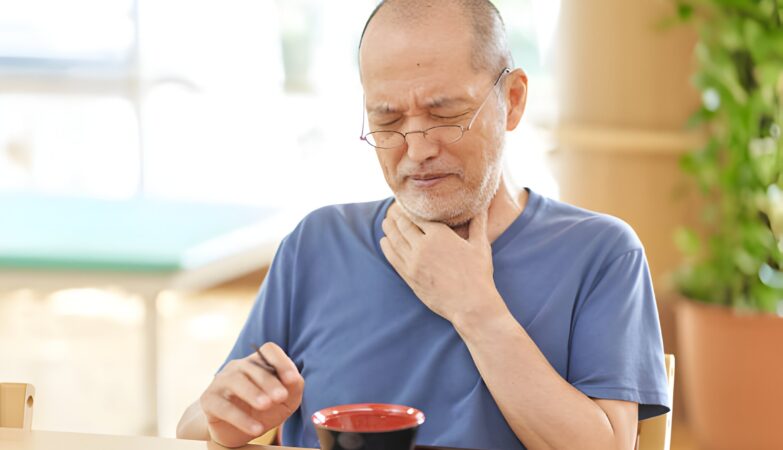Knowing how to treat a spider bite correctly is crucial. It can lead to a quick recovery instead of lasting problems. If a spider has bitten you, or you want to be prepared, learning effective care is key. This guide gives valuable advice on first aid for spider bites. It helps you spot, handle, and treat bites effectively.
Key Takeaways
- Recognize common symptoms to distinguish a spider bite from other skin lesions.
- Learn the initial steps of spider bite first aid to alleviate symptoms and prevent infection.
- Explore proven methods on how to treat a spider bite effectively at home.
- Identify when a spider bite requires professional medical attention.
- Understand the significant role of antivenom for bites from certain venomous spiders.
- Acquire preventive measures to reduce the risk of spider bites in the future.
Understanding Spider Bite Symptoms
Learning how to tell if you have a spider bite is important for your health. It starts with debunking common myths and knowing the real signs of a bite. Not every spider bite is dangerous, but recognizing the harmful ones and knowing what to do is key.
Common Misconceptions About Spider Bites
Many people think spider bites always show two marks. But most spider bites might show only one mark, or none at all. Also, spiders often get credit for being more venomous than they are. In truth, very few spiders can actually harm us.
Identifying the Marks of a Spider Bite
Finding a spider bite isn’t always easy because the signs can be small or hard to see. You might see a swollen, red bump that itches or hurts. Sometimes, a rash can form, which may mean you’re reacting to spider venom. If you’re unsure, especially in areas with dangerous spiders, talk to a professional.
Immediate Physical Reactions to Watch For
Spider bites can cause reactions from mild to severe. Expect some pain and redness with most bites. But bites from spiders like the black widow or brown recluse can cause serious problems. These include strong pain, stiff muscles, fever, or chills. Spotting these symptoms early can help you understand the bite’s seriousness and find the right treatment.
Common Spiders and Their Identifiable Marks
It’s vital to know how to identify spiders to understand the risks from their bites. The black widow and the brown recluse are especially important. They have unique marks that you can see in pictures of their bites. Knowing what these spiders look like helps in getting the right treatment fast.
Recognizing the Black Widow Spider
The black widow is easy to spot. Look for its shiny black body and the famous red hourglass on its belly. If you see this spider or its bite, watch out for severe pain and cramps. These symptoms need quick medical help to avoid getting worse.
Distinguishing the Brown Recluse Spider
Be careful with the brown recluse spider too. Its bite might not hurt at first but can turn serious. This spider has a violin mark on its back. Its body color can be from golden to dark brown.
| Spider Type | Distinct Markings | Common Reactions to Bites |
|---|---|---|
| Black Widow | Red hourglass on underbelly | Severe pain, cramps, systemic reactions |
| Brown Recluse | Violin-shaped mark on back | Mild to severe bite reactions, possible tissue damage |
Knowing how to spot these spiders and their bites can make a big difference. Look at pictures to learn. While many bites are okay to treat at home, the bad ones need a doctor right away.
First Aid Tips for Spider Bite Care
If you or someone nearby gets bit by a spider, acting fast is key. Knowing the right first aid steps for a spider bite is important. It lets you handle the situation well until you can get medical care if needed.
Cleaning and Disinfecting the Bite
Cleaning the bite area is the first step. Washing gently with soap and water gets rid of bacteria. After washing, apply antibiotic ointment to protect against germs while healing.
Applying Cold Compresses to Reduce Swelling
Cold compresses can ease the discomfort and stop swelling. Using a cloth-wrapped ice pack on and off can also ease minor pain from a bite.
When to Elevate the Affected Area
Elevating the bitten limb can help with swelling. It also helps with better blood flow, which might make healing quicker. Try to keep it raised as much as you can.
- Gently wash the bite with soap and water
- Apply a clean bandage after disinfecting
- Use an ice pack wrapped in cloth to reduce pain and swelling
- Keep the bitten area elevated, if possible
- Watch for signs of infection or allergic reaction
Always watch for signs like more redness, swelling, or pain. These might mean the reaction is getting serious and you need medical help fast. Knowing these first aid steps is essential for caring for spider bites right after they happen.
When to Seek Professional Medical Attention
Knowing when to move from treating a spider bite at home to getting professional help is crucial. Certain signs mean it’s time to switch how you treat a spider bite. Acting fast and being aware can really change the outcome, especially with venomous spiders.
Identifying Severe Symptoms Necessitating Urgent Care
Some spider bites can become really serious. If you feel a lot of pain, cramps, have trouble breathing, or see signs of infection, you need to get help right away. This is especially true for bites from black widows or brown recluses. Quick medical care is key to avoid big problems.
The Role of Antivenom for Black Widow Bites
Using antivenom is a main way to treat black widow bites. Only medical pros can give this treatment if the bite is really bad or life-threatening. You should see a doctor fast. They can decide if you need antivenom, which stops the venom’s bad effects.
| Symptom | First Aid Response | When to Seek Medical Help |
|---|---|---|
| Localized Pain and Redness | Clean with soap and water, apply a cold compress. | If pain escalates or redness spreads. |
| Abdominal Cramping | Take over-the-counter pain relief medication. | Immediate medical attention if cramping is severe. |
| Difficulty Breathing | Ensure open airways, stay calm. | Seek emergency help immediately. |
| Infection Signs (e.g., pus, swelling) | Use antiseptic ointment, observe for changes. | If signs of infection worsen or don’t improve with care. |
It’s also vital to know and use good spider bite prevention steps. This can really cut down on the chance of running into these risky spiders.
Spider Bite Treatment Options
Acting fast on spider bites helps you heal quicker. While most bites don’t cause harm, knowing how to treat them is important. Your home is usually the best place for this care.
Over-the-Counter Medications and Their Use
Starting treatment for a spider bite might mean looking in your medicine cabinet. Pain relievers like ibuprofen or acetaminophen can ease pain. Antihistamines like diphenhydramine reduce itching. These medicines are easy to get and use. They help your body get back to how it was before the bite. It’s crucial to know how to safely treat a spider bite with these.
The Importance of Tetanus Shots in Treatment
Spider bites can break the skin, just like other sharp injuries. This can make you worry about tetanus. Tetanus is a bacterial infection that’s very serious. You should talk to a doctor about getting a tetanus shot. This is especially true if your last shot was a long time ago or you’re not sure. Getting a shot on time helps your body fight off the infection. It lowers the risk of serious problems from a spider bite.
- Pain relievers: To subdue discomfort
- Antihistamines: To combat itching
- Tetanus immunization: To prevent secondary infection from puncture wounds
Matching these steps to the bite’s type and how bad it is, is key to good care.
Spider Bite Remedies for Itch Relief and Comfort
Looking for spider bite remedies? There are a few at-home options that can help. If you’re dealing with itching and discomfort from a spider bite, Aloe vera is known to help. Its cooling effect not only calms the skin but also helps it heal. Another common choice is Calamine lotion, great for soothing itchiness and lowering swelling.
Over-the-counter steroid creams are also useful for easing itchiness from spider bites. These creams are part of the effective treatments lineup. However, it’s crucial to stick with treatments that doctors suggest. Trying home remedies like baking soda, lemon juice, salt, or charcoal can be a bad idea. They don’t counteract spider venom and aren’t recommended for spider bite treatment.
Below is a table illustrating various remedies and their intended effect:
| Remedy | Purpose | Application Notes |
|---|---|---|
| Aloe vera | Itch Relief and Healing | Apply directly to the affected area for cooling relief. |
| Calamine lotion | Itch Relief and Anti-inflammatory | Gently dab onto the bite site to soothe irritation and reduce redness. |
| Steroid Creams | Itch Relief and Reduction of Inflammation | Use sparingly on the bite, following package instructions for dosage and frequency. |
In summary, when looking for spider bite treatments, it’s important to choose those verified by medical experts. Ensure the remedies are safe and meant for spider bite treatment. And if symptoms don’t go away, make sure to see a doctor.
The Necessity of Spider Bite Prevention
Taking steps for spider bite prevention is key for our health and peace of mind. “Prevention is better than cure” is especially true for spider bites. By being proactive, we can lower the risk of running into spiders. This section explains how to reduce spider encounters and keep spiders away from our homes and gardens.
Strategies to Minimize Spider Encounters
To see fewer spiders, think about changing your surroundings and habits. Paying attention to details can make your space unattractive to spiders. Here are some tips to help with your spider bite prevention plan:
- Regularly clean and vacuum your home to remove webs and discourage spiders from settling.
- Store items such as clothing and shoes inside sealed containers to eliminate hiding spots.
- Use protective gear like gloves when moving items stored in garages or sheds.
- Check and shake out any clothing, bedding, or towels that have been left outside before using.
Effective Home and Garden Spider Prevention Tips
The area around your home is crucial for stopping spiders. By making simple changes and maintaining your space, your home and garden can be less welcoming to spiders. This supports spider bite care and prevention.
| Home and Garden Area | Prevention Tips | Benefits |
|---|---|---|
| Entryways | Install door sweeps and repair gaps in windows. | Blocks spiders from entering the home. |
| Outdoor Lighting | Use yellow or sodium vapor lights which attract fewer insects. | Reduces insects that spiders feed on, making your home less attractive to them. |
| Landscaping | Trim plants and trees away from the house. | Limits pathways for spiders to enter and creates less inviting habitats. |
| Clutter | Declutter both indoor and outdoor spaces to eliminate spider retreats. | Spiders are less likely to reside and breed in tidy environments. |
| Cracks and Crevices | Seal any openings with caulk. | Prevents spiders from finding a way into your home. |
| Chemical Repellents | Consider appropriate repellents for areas with high spider activity. | Creates a barrier that deters spider presence. |
By adding these effective treatments to your routine, you make your home less inviting to spiders. This helps with spider bite care by focusing on prevention. It’s important to remember, while not every spider is dangerous, the risky ones warrant careful avoidance and control.
Spider Bite Identification: Pictures and Descriptions
Identifying spider bites correctly is crucial, especially for those not trained in this area. Spider bite pictures are essential in telling them apart from other skin issues that look similar. High-quality images are key for picking the right treatment.
For reliable identification, photos showing the bite’s color, size, and special marks are very important. True spider bites may show redness, swelling, itching, or pain. Below, you’ll find a guide to recognize different spider bites by how they look and their symptoms:
| Spider Type | Bite Mark Characteristics | Accompanying Symptoms |
|---|---|---|
| Black Widow | Reddish to purplish hue, two faint puncture marks | Intense pain, muscle cramps, sweating |
| Brown Recluse | Bullseye appearance, blistering | Fever, chills, body aches, necrosis around bite |
| Common House Spider | Minor redness and swelling | Mild pain, typically resolves quickly without intervention |
Venomous spiders like black widows and brown recluses need quick medical help. Their bites have clear signs, like a “target” look or worse reactions. If you see these, get effective treatments right away.
If you didn’t see the spider or if the bite looks like other skin problems, talking to a doctor is wise. They or experts in poisons or skin can help identify the bite well.
- See a doctor if the bite gets worse or infected.
- Keep track of how the bite changes with spider bite pictures.
- Follow medical advice on treating your specific bite with effective treatments.
By closely watching and using good pictures, figuring out a spider bite becomes clearer. This leads to a quicker and more sure way to get better.
Conclusion
Knowing about spider bite symptoms and treatments is vital. It helps you manage these incidents better. To care for a spider bite, you must first identify the spider and how serious the bite is. This is because being informed is key. For some bites, first aid and home remedies help. Yet, bites from venomous spiders need quick medical help to avoid bad outcomes.
Spotting signs of severe reactions fast and knowing when to get professional help can lessen health dangers. This effort is not just to ease pain but also to ensure safety and recovery. Good spider bite treatment depends on quick actions and preventing future bites. By using effective prevention, the chance of getting bitten by spiders drops, making it safer for everyone.
Since stopping bites is as important as treating them, taking steps to avoid them is wise. You can reduce the risk of dangerous spider encounters by making your space less attractive to them. Also, knowing how to deal with or dodge bites is smart. Always remember, learning and preparing are the best defenses against spider bites’ harmful effects.
FAQ
What are common misconceptions about spider bites?
It’s a myth that spider bites always show as two puncture marks. Most spiders can’t pierce our skin. Bites can look like other skin problems or just one single mark.
How can you identify the marks of a spider bite?
To spot a spider bite, look for a red and swollen area. It might have a central mark. Swelling and pain around it can also mean it’s a spider bite.
What are immediate physical reactions to watch for after a spider bite?
Right after a bite, you might feel pain ranging from mild to very strong. Itchiness, redness, and swelling can happen too. If you have trouble breathing or muscle cramps, get medical help fast.
How can you recognize a black widow spider?
The black widow has a shiny black body, thin legs, and a red hourglass shape on its belly.
What are the identifiable marks of a brown recluse spider?
A brown recluse has a golden-brown color, legs all one color, and a dark, violin-shaped mark on its back.
What are the first steps of first aid for a spider bite?
First, wash the bite with soap and water. Then, put on a cold compress to bring down the swelling. An antibiotic ointment helps prevent infection. If swelling is bad, lift the bitten part up.
When should you seek professional medical attention for a spider bite?
Go see a doctor if the bite could be from a poison spider, like a black widow or brown recluse. Also, if the pain, stomach cramps, or breathing problems are severe, seek medical help.
What role does antivenom play in treating black widow spider bites?
For serious black widow bites, doctors might use antivenom. It fights the venom, easing muscle cramps and other serious side effects.
When should over-the-counter medications be used for spider bite treatment?
Pain relievers and antihistamines from the store can lessen mild pain, itchiness, and allergic reactions. But, they’re not a replacement for seeing a doctor when it’s necessary.
Are tetanus shots important in spider bite treatment?
Tetanus from spider bites is rare. But, if the bite is deep and your tetanus shot is old, you might need a new one.
What remedies can provide itch relief and comfort after a spider bite?
For itching, try aloe vera, calamine lotion, or hydrocortisone cream from the store. Always use as the directions say and talk to a doctor if things don’t get better.
What strategies help to minimize spider encounters?
Keep your home and yard tidy to avoid spiders. Wearing protective clothing and using repellents can help too.
What are effective home and garden spider prevention tips?
Stop spiders from coming in by sealing up cracks and using window screens. Keep your yard clean to discourage them from settling.
How helpful are pictures and descriptions in spider bite identification?
Pictures and good descriptions of the bite and spider can really help doctors or experts figure out what bit you.






